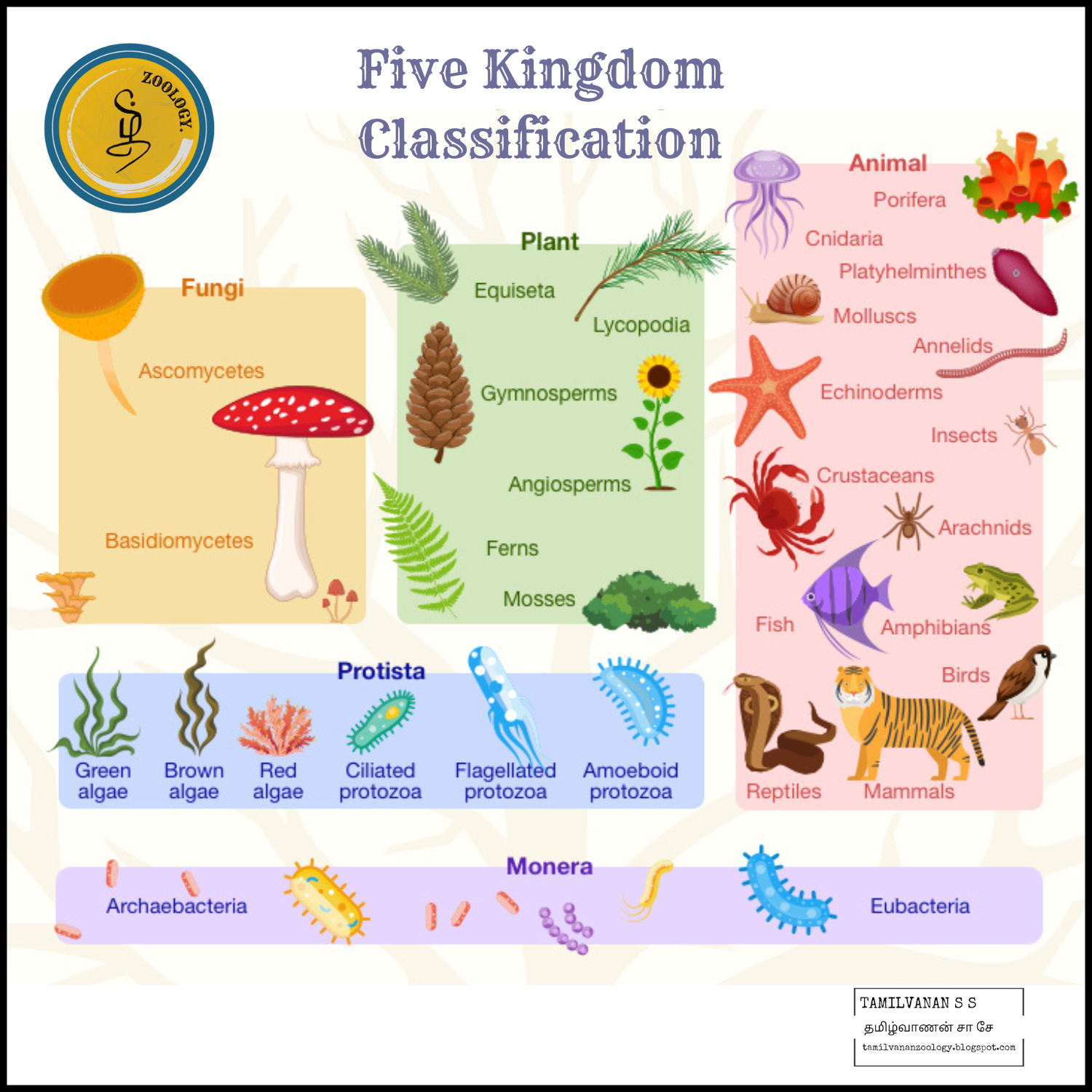Introduction
Millions of living things inhabit our planet, but did you know that they are divided into five separate kingdoms? Some, like animals and plants, are visible to the naked eye; but others, like bacteria, can only be seen under a microscope. Let's delve into the world of the five kingdoms of nature and find out a bit more about them.
Nobody knows for certain when, how or why life began on Earth, but Aristotle observed 2,400 years ago that all the planet's biodiversity was of animal or plant origin. This initial observation by the Greek philosopher was expanded in the 19th and 20th centuries by the discovery of new kingdoms, finally arriving at today's widely-recognised five, which cover the 8.7 million species that live on Earth, according to estimates by the United Nations Environment Programme (UNEP).
Kingdom In Biology
The system of biological kingdoms is the way in which science classifies living things according to their ancestry over the course of evolution. This means that all the species that make up these five large groups - some recent theories split them further into six or even seven - have common ancestors and therefore share some of their genes and belong to the same family tree.
As well as the kingdoms of living things there are other taxonomic categories within the same classification system such as, for instance, domain, phylum, class, order, family, genus and species. They all follow a hierarchical order and are dependent on each other, so some divisions include others. In this way, the domain includes the kingdom, the kingdom the phylum, the phylum the class, and so on.
Characteristics of the Five Kingdom of Living Things
All the species in a particular kingdom have similar characteristics in terms of their growth and the way they function. Now let's look at where the family relationships that define nature's kingdoms come from:
# Nutrition. Autotrophic (makes its own food) or heterotrophic (feeds on other living things).
# Cell organization. Unicellular (having only one cell) or multicellular (having two or more cells).
# Cell type. Eukaryotes (the genetic material is surrounded by a membrane) or prokaryotes (lacking a membrane).
# Respiration. Aerobic (needs oxygen) or anaerobic (does not use oxygen).
# Reproduction. Sexual, asexual or through spores.
# Movement. Self-moving or static.
Classification of Living Things into Five Kingdom
The first person to divide living things into five broad kingdoms was North American ecologist Robert Whittaker. This researcher proved in 1959 that fungi were not plant organisms - previously it was thought that they were - and a decade later he proposed the creation of the fungi kingdom to differentiate them from plants. Whittaker's theory was widely accepted and the scientific community thereby added a new group to the previous four-kingdom system, established by the American biologist Herbert Copeland in 1956.
Animal kingdom
The kingdom Animalia is the most evolved and is divided into two large groups - vertebrates and invertebrates. These animals are multi-celled, heterotrophic eukaryotes with aerobic respiration, sexual reproduction and the ability to move. This kingdom is one of the most diverse and comprises mammals, fish, birds, reptiles, amphibians, insects, molluscs and annelids, among others.
Plant kingdom
Trees, plants and other species of vegetation make up part of the Plantae kingdom - one of the oldest, and characterised by its immobile, multicellular and eukaryotic nature. These autotrophic things, whose cells contain cellulose and chlorophyll are essential for life on Earth since they release oxygen through photosynthesis. As regards their method of reproduction, this may be either sexual or asexual.
Fungi kingdom
This name is used to designate the fungi kingdom which includes yeasts, moulds and all species of mushrooms and toadstools. These multicellular aerobic heterotrophic eukaryotes have chitin in their cell walls, feed off other living things, and reproduce through spores.
Protista kingdom
This group is the most primitive of the eukaryotics and all the others are descendants of it. The Protista kingdom is paraphyletic - it contains the common ancestor but not all its descendants - and it includes those eukaryotic organisms that are not deemed to be animals, plants or fungi such as protozoa. As it is so heterogeneous it is difficult to categorise it, since its members have very little in common.
Monera kingdom
This is the kingdom of microscopic living things and groups together the prokaryotes (archaea and bacteria). This group is present in all habitats and is made up of single-cell things with no defined nucleus. Most bacteria are aerobic and heterotrophic, while the archaea are usually anaerobic and their metabolism is chemosynthetic.
The classification of the five kingdoms of nature remains the most accepted today, although the latest advances in genetic research have suggested new revisions and reopened the debate among experts. Such is the case for the sixth kingdom of Carl Woese and George Fox, who in 1977 divided bacteria into two types (Archaea and Bacteria), and the seventh kingdom of Cavalier-Smith, who added a new group to the previous six for algae called Chromista.
Pros and Cons
The five kingdom classification has many advantages and disadvantages which are as follows:
# Advantages of five kingdom classification include:
• Five kingdom classification is better and more natural than two kingdom classification.
• It places the unicellular and multicellular organisms separately.
• It places the autotrophs and heterotrophs separately.
• It places the fungi in a separate group (kingdom Fungi) as it has a different mode of nutrition.
• It places the prokaryotes in a separate group (kingdom Monera).
# Disadvantages of five kingdom classification include:
• It puts unicellular algae in kingdom Protista but multicellular algae in kingdom plantae. However, both the organisms must belong to the same group.
• Thus organisms showing similarities are placed quite apart. For example unicellular and multicellular algae.
• Many organisms with dissimilarities have been put together in kingdom Protista. This leads to diversity in kingdom Protista.
• Viruses are entirely excluded from the five kingdom classification system.




